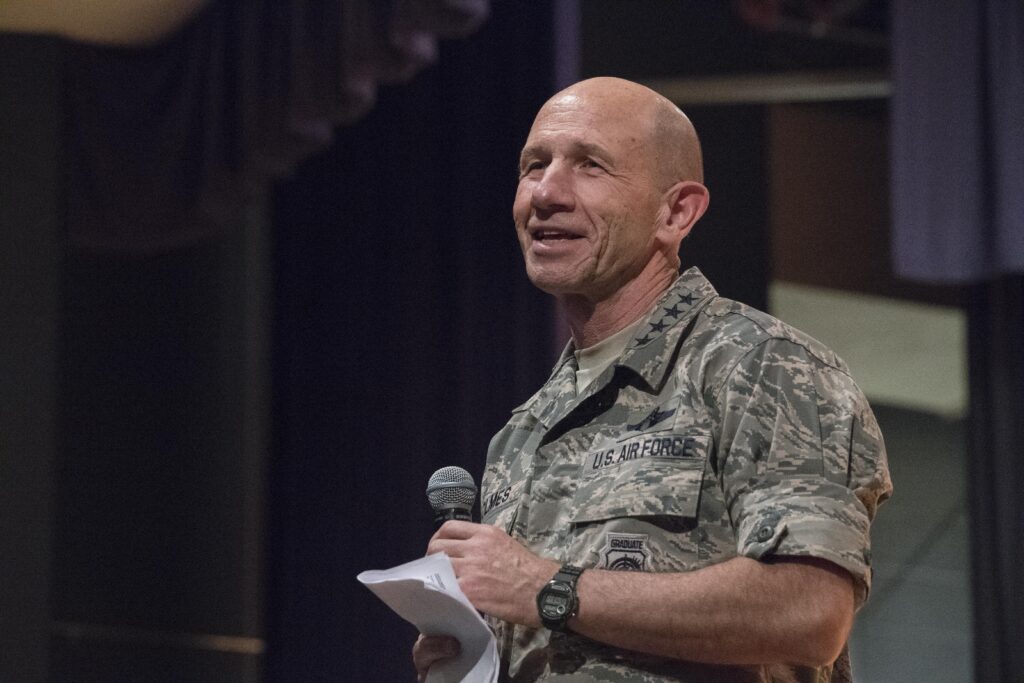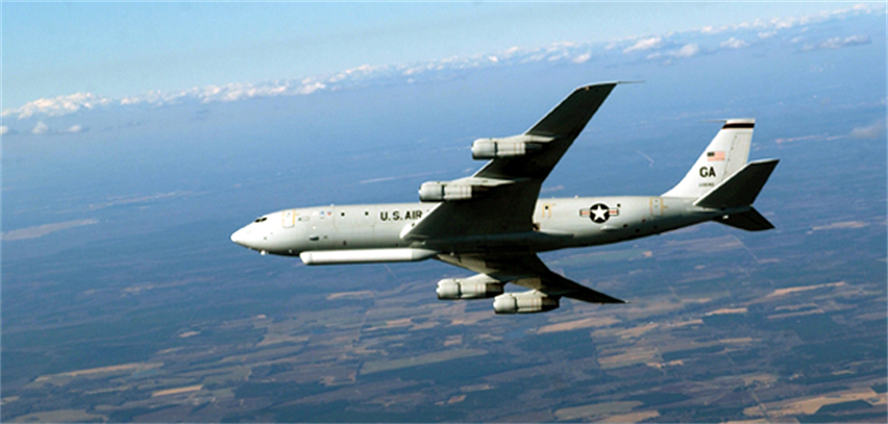
Gen. Mike Holmes
AFA HQ: We finally learned why the Air Force has been backing away from a new JSTARS: it probably wouldn’t be much use in a real shooting war.
That’s the verdict, stated in less unforgiving terms by the head of Air Combat Command, Gen. Mike Holmes, here in a speech.
“The question is, how will we fight and close the kill chain in a contested environment, in a highly contested environment, in the world we live in now,” Holmes said in response to a question posed by my FlightGlobal colleague Leigh Giangreco. “If war kicked off in Northern Europe, soldiers would already be under the umbrella of an integrated air defense when the war kicked off.” (Such multi-layered systems of long-range missiles, fighters, and sensors are known in Pentagon jargon as Anti-Access/Area Denial or A2/AD).
Holmes said “none of those systems we are fielding now, including our current JSTARS or a replacement JSTARS” would allow the US to break that kill chain. He didn’t say it, but the reason must be that the plane would just be too easy a target for the Russian S-400 air-aircraft systems deployed in Kaliningrad and along the western Russian border.

E-8C JSTARS
The existing JSTARS was designed to help the US and NATO find, fix and kill Soviet tanks, BMPs and other military vehicles as part of the AirLand Battle doctrine, the general reminded us. Today, JSTARS is largely used as a communications relay system and to spot “small vehicles and dismounted people,” he said. That’s a job that doesn’t really require a new capability since the aircraft can operate in uncontested environments and there are other assets such as the Global Hawk Block 40 and the P-8 that can do the same job.
The most important long-term news from Holmes was that the Air Force seems likely to go ahead with a major commitment to Electronic Warfare innovation, as it has with Multi-Domain Command and Control (MDC2) and Next-Generation Air Dominance. The vehicle for it would be an Enterprise Capability Collaboration Team (ECCT). We had previously reported this, but there’s been nary a peep out of the Air Force about it for months.
“I believe it will” occur, Holmes said, adding that the ECCT will tie into the Joint Study already underway on EW. No one has been picked yet to run it. I asked if they had decided a fundamental question: whether cyber capabilities would be included in the ECCT. “I don’t know,” he said. “We have to decide how we define that down,” noting the ongoing debate about where EW ends and cyber begins. Perhaps this will open the way for an ECCT on cyber or information operations?
Navy jet trainer fleet operations remain paused after engine mishap
One week after the incident, a Navy spokesperson says the service is continuing to assess the fleet’s ability to safely resume flight.


























